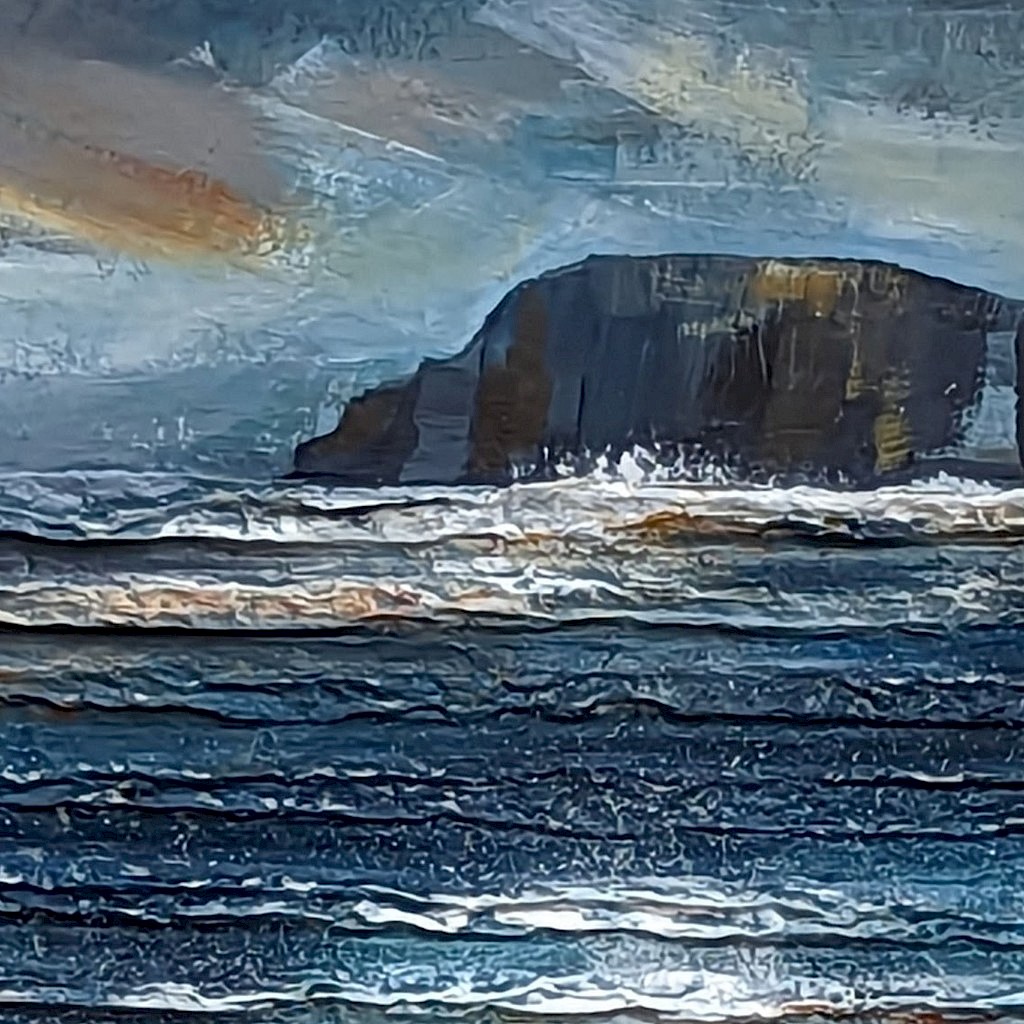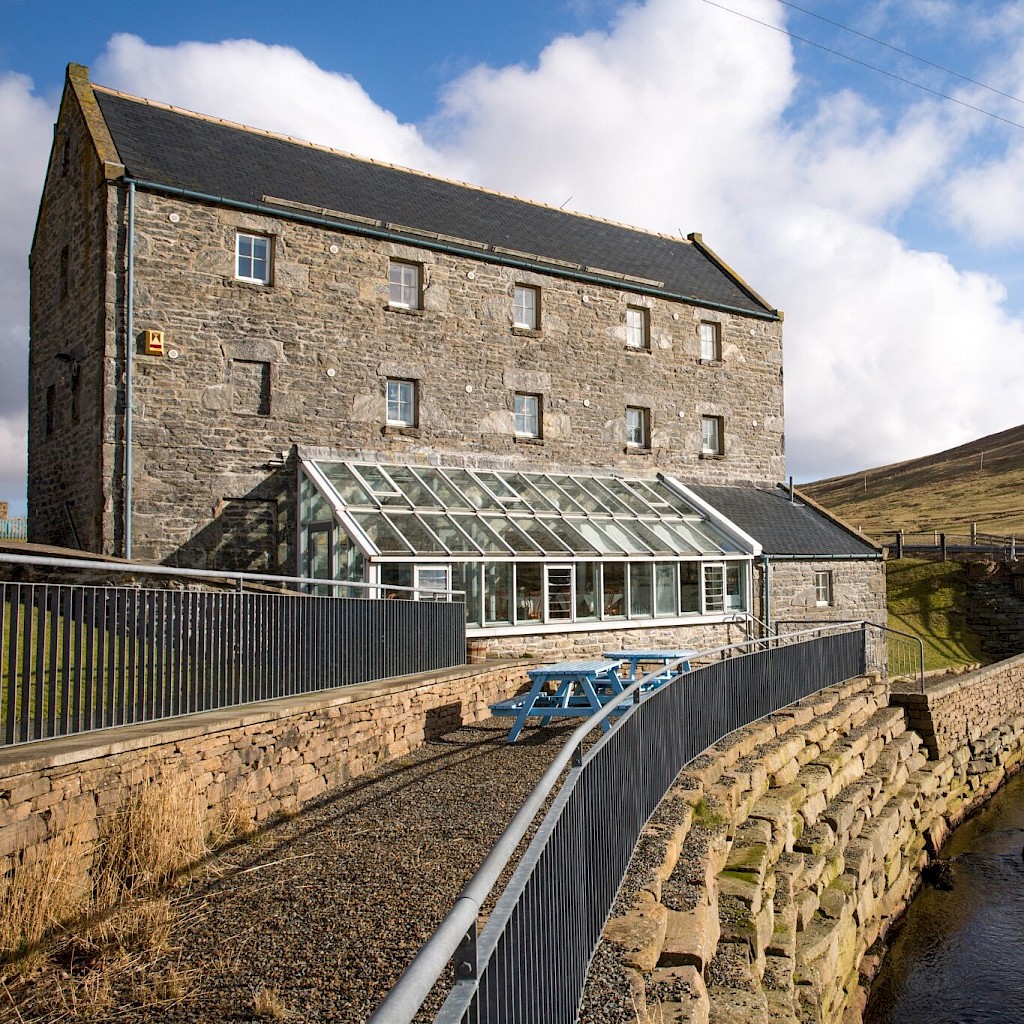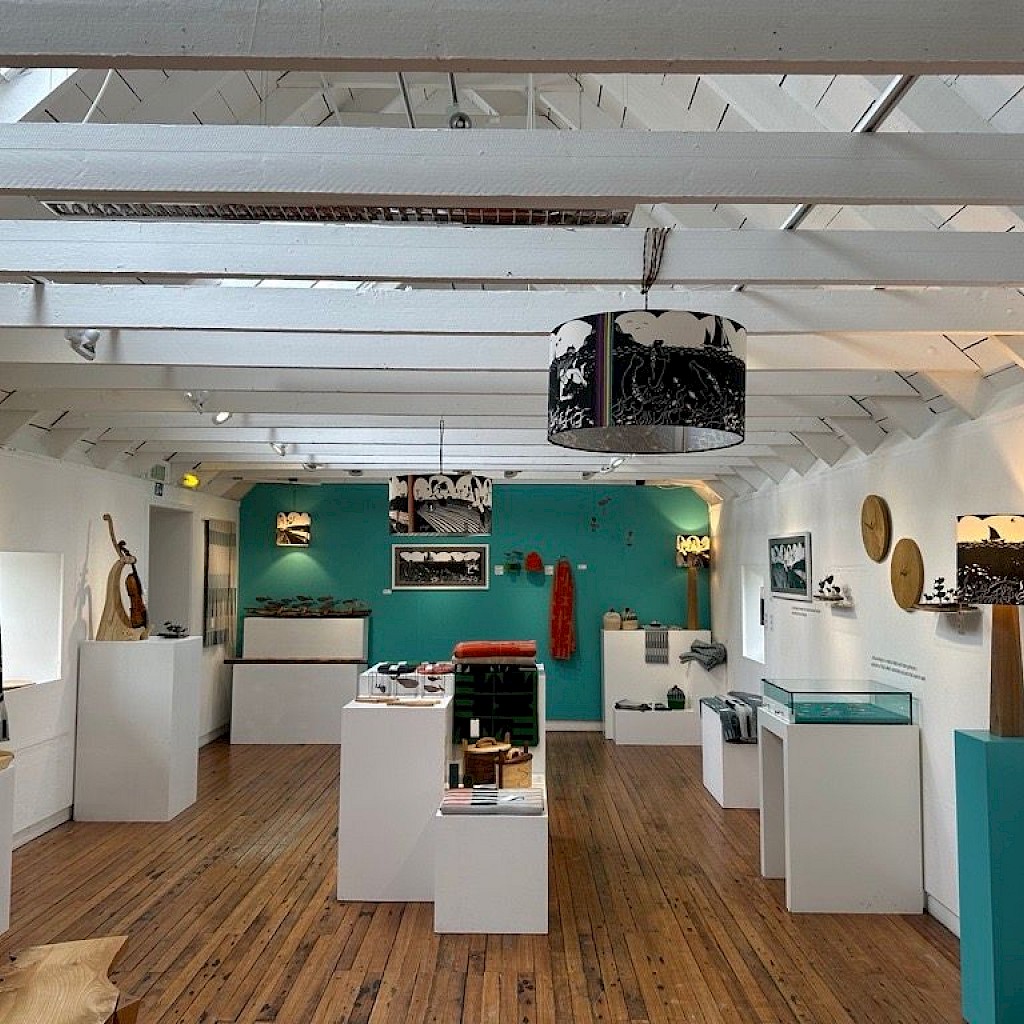What is the name of your company? Where do you do your work?
I’m Elaine Nicolson and my company is Makkin Loops however I’ve just recently changed the title and I’m now trading under Tekstiler using a Scandinavian spelling. That’s kind of because, in the long run, I hope to reach that market – that’s my ultimate aim. The reason I changed the name was everybody kept changing it to “Making Loops” rather than Makkin Loops which is what had the meaning to me.
Where do you do your work?
Most of my work is made on the machines at the Textile Facilitation Unit (TFU) in Shetland College. It’s mostly machine-made, then finished by hand. I do the hand-finishing at home, I converted a bedroom into a peerie work studio and I just work from there.
What interesting equipment do you use?
I don’t use any interesting equipment myself, just the design-a-knit program on the computer. I basically work with a needle because I do the finishing. But my textiles are made on the fine 12 Gauge Shima machine which is quite a bit of kit! A large industrial appliance, its huge. The technicians in the TFU are instrumental in helping me produce my textiles. The Shima is more complex than the domestic machines.
Who or what do you draw inspiration from?
I find inspiration all around, every day. I’m never short of inspiration, what I’m short of is time to get my designs onto the machines. I like looking at textiles from the past that my mother or my granny has made – I find much inspiration there. Maybe its in my genes.
Why do you choose to use the materials that you use? Where do you source your materials?
I learned to knit at a young age, taught by my grandmother. Yarn was a medium I felt comfortable with. I suppose it was just trying to work with what I knew. When I picked up a ball of wool, I instantly felt comfortable and it’s just built on that.
When I started at the college, the thicker the yarn the better because it was quicker to get things done but I’ve turned it right around now and like working in the finest yarns, just like a thread. That’s where I’m happy. But it’s all done on the machine so you’re not sitting knitting and purling or you would be sitting for a while! I source my materials via the internet and I prefer to work in wool and natural fibres.
How do you work, what is your process? What's your favourite part of the process?
My process starts with the concept. It just seems to come from within, I scribble in my sketchbook and I consider the fibres. I get a swatch knitted up and look again, thinking “will it work?” It either works or not, sometimes it doesn’t but then I might revisit it with a different fibre.
I’m trying to achieve the best tactile experience, for comfort for the wearer. My favourite part of the process is washing the finished items and seeing how the fibres work together.
Do you have a favourite kind of piece to make?
I suppose the first piece that came off the 12 gauge machine is my favourite. I took the idea from hand-made lace and knitted it in a Fair Isle jacquard style to design the hap blanket. Eric Stewart that was the technician at the college at that point in time. When I saw it coming out of the machine, I was quite excited But Eric was just absolutely not and I thought “oh it’s obviously not that great”. Even when it came off the machine, Eric still wasn’t that impressed so I was kind of knocked back. I went home and washed the blanket and took it back in to college and then Eric got enthusiastic when he saw the blanket. Its only when it’s washed that it’s done and you can see the real finish on it.
How long does it tend to take you to complete a piece?
The idea and the concept doesn’t take long but then you have to wait for your slot in the TFU and if it doesn’t work you might have to wait weeks again. So for example, the hap blanket, that really all just came together in a few days. Whereas some of the things, you’re waiting for design time and it could take months.There’s not enough time available in the TFU, there’s so much demand for it. That restricts my design work.
So you’re slightly forced to be less productive?
Yes! Totally. I didn’t get into the TFU for about six months over the winter time so I just had to scratch my ideas down on paper. But by the end of six months, your ideas have all gone in on themselves and they just stop.
What does your craft mean to you?
It means a lot to me. With the textiles, there’s something to see and you have something at the end of it and I enjoy that.
I enjoy taking the traditional knitting forward in a contemporary way because Shetland was, and still is full of real expert knitters.
Hand knitted lace consumes a lot of time, that’s why I went to machine knitting because when you’re hand knitting lace, you need perfection. If you knit one wrong stitch, that one wrong stitch influences the eight stitches surrounding it, therefore it takes a lot of concentration – I’m just taking the easy option if I’m being honest!
What is next for you? Anything exciting?
Yes, I do have something exciting next.
I’ve been invited by the Shetland College to go to New Designers in London and exhibit as “work in progress” along with this year’s Honours student’s so that’s really exciting!
I finished college with a BA degree, as I thought I’d done enough, so I’m very fortunate to get this opportunity. A whole week at New Designers 2018 with Megan Smith and Rhea Kay this year’s Shetland College Honours students.
Do you make your craft full time or do you have another job?
I work as a part-time Practice Nurse and I’m also self-employed. I just do my crafts in among all that, I see it as a form of relaxation! I don’t watch much TV so I suppose where other folk might watch TV, I focus on my crafts.
Craft aside, what do you like to do in your spare time?
Peerie bit of reading, peerie bit of walking. I’ve just taken up walking to try and get a bit fitter after the years of sitting studying. But that’s new for me!
If you could own another artist’s work, who would you choose? Why?
That’s a difficult question to narrow down. I’m really inspired by a lot of the local Shetland artists, Nielanell’s work really inspires me. And the late Doctor Bobby Robertson’s work . Bobby encouraged me to go to the college. He painted mainly in watercolour although he did some oils too. It was really just enjoying his work that made me wonder if I could go to college and do something with textiles. He encouraged me to take up creative studies, I went and now here I am! Sadly, Bobby died a few years ago but he inspired me a lot.
What motivates you to do what you do?
I think my knitting heritage motivates me, my forebearers were expert hand and machine knitters. My father also knitted on the machine and can hand knit too.
What constitutes a successful piece for you?
A successful piece for me is a piece that I feel happy with, that I feel I have gotten to the point where I feel it’s ok. And then getting a positive response or good feedback maybe that is a successful piece for me.



